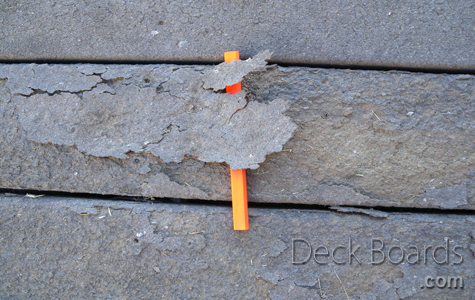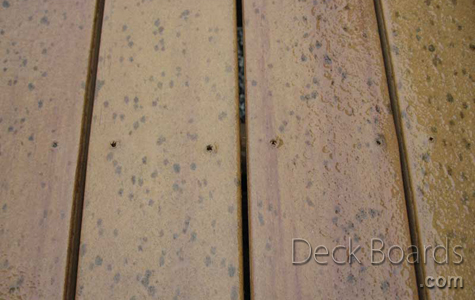Composite Deck Boards
Composite decking brands say their products are reliable, mimic the look of real wood, and are maintenance free. When you search online, you'll probably find many homeowners who have something different to say.
Despite the fact composite deck boards are made from recycled plastics and wood fibers reused materials, you might not think it's as eco-friendly the claims suggest.
Many brands of composite decking are:
- Composed of recycled plastic & wood fibers
- Fused with undisclosed chemicals by companies who make their product overseas
- Fade resistant depending on the plastic to wood ratio
- Only as "strong" as the plastic that's used (bottles, plastic bags vs. containers, jugs)
- More expensive than hardwood deck materials
- Riddled with complaints, lawsuits, and government recalls (see below)
How can a product so popular be so problematic?
Wood fibers are soft, porous, and susceptible to mold. If you search online for "composite decking mold," "complaints," and "reviews," you will see pictures and testimonials from actual homeowners. When you search for "composite deck recalls" you'll be shocked to see pictures like the one to the right where decks are literally peeling away. Given the expenses like cost, labor, and maintenance involved with building and cleaning a composite deck, can you say it's the right material for you?
| Prone to absorb moisture which leads to spotting, mold, and surface decay. |
| Warranty claims due to mold, etc. can be problematic and time consuming |
| Expensive and constant upkeep adds additional labor & material costs |
| If burned, or subjected to hot items, damage could be irreperable |
| Higher plastic to wood ratio can lead to warped boards. Greater wood to plastic ratio can lead to rapid decay due to milder and/or rot. |
Learn more about composite decking alternatives...



